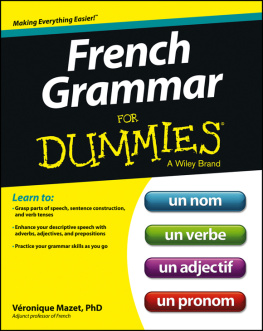
 Copyright 2012 by The McGraw-Hill Companies, Inc. All rights reserved. Except as permitted under the United States Copyright Act of 1976, no part of this publication may be reproduced or distributed in any form or by any means, or stored in a database or retrieval system, without the prior written permission of the publisher. ISBN: 978-0-07-178825-0
Copyright 2012 by The McGraw-Hill Companies, Inc. All rights reserved. Except as permitted under the United States Copyright Act of 1976, no part of this publication may be reproduced or distributed in any form or by any means, or stored in a database or retrieval system, without the prior written permission of the publisher. ISBN: 978-0-07-178825-0
MHID: 0-07-178825-5 The material in this eBook also appears in the print version of this title: ISBN: 978-0-07-178824-3, MHID: 0-07-178824-7. All trademarks are trademarks of their respective owners. Rather than put a trademark symbol after every occurrence of a trademarked name, we use names in an editorial fashion only, and to the benefit of the trademark owner, with no intention of infringement of the trademark.
Where such designations appear in this book, they have been printed with initial caps. McGraw-Hill eBooks are available at special quantity discounts to use as premiums and sales promotions, or for use in corporate training programs. To contact a representative please e-mail us at bulksales@mcgraw-hill.com. TERMS OF USE This is a copyrighted work and The McGraw-Hill Companies, Inc. (McGraw-Hill) and its licensors reserve all rights in and to the work. Use of this work is subject to these terms.
Except as permitted under the Copyright Act of 1976 and the right to store and retrieve one copy of the work, you may not decompile, disassemble, reverse engineer, reproduce, modify, create derivative works based upon, transmit, distribute, disseminate, sell, publish or sublicense the work or any part of it without McGraw-Hills prior consent. You may use the work for your own noncommercial and personal use; any other use of the work is strictly prohibited. Your right to use the work may be terminated if you fail to comply with these terms. THE WORK IS PROVIDED AS IS. McGRAW-HILL AND ITS LICENSORS MAKE NO GUARANTEES OR WARRANTIES AS TO THE ACCURACY, ADEQUACY OR COMPLETENESS OF OR RESULTS TO BE OBTAINED FROM USING THE WORK, INCLUDING ANY INFORMATION THAT CAN BE ACCESSED THROUGH THE WORK VIA HYPERLINK OR OTHERWISE, AND EXPRESSLY DISCLAIM ANY WARRANTY, EXPRESS OR IMPLIED, INCLUDING BUT NOT LIMITED TO IMPLIED WARRANTIES OF MERCHANTABILITY OR FITNESS FOR A PARTICULAR PURPOSE. McGraw-Hill and its licensors do not warrant or guarantee that the functions contained in the work will meet your requirements or that its operation will be uninterrupted or error free.
Neither McGraw-Hill nor its licensors shall be liable to you or anyone else for any inaccuracy, error or omission, regardless of cause, in the work or for any damages resulting therefrom. McGraw-Hill has no responsibility for the content of any information accessed through the work. Under no circumstances shall McGraw-Hill and/or its licensors be liable for any indirect, incidental, special, punitive, consequential or similar damages that result from the use of or inability to use the work, even if any of them has been advised of the possibility of such damages. This limitation of liability shall apply to any claim or cause whatsoever whether such claim or cause arises in contract, tort or otherwise. Thanks to all the dedicated students of French
who are willing to go the extra mile to learn
this beautiful but difficult language.
Especially my students here in Texas!
CONTENTS
INTRODUCTION
This book identifies the most common trouble spots for English speakers learning French. It provides a basis for understanding why these trouble spots cause difficulty, and offers guidance and practice for avoiding potential
blunders.
In the process of learning a foreign language, most errors occur when the learner transfers the patterns of his or her native language directly to the target language. The most effective way to identify these trouble spots is to take the point of view of the learneryour point of viewand start like you would, from English. For instance, what potential blunders could we find in trying to express This is the woman I wanted to work with in French? We see three potential sources of error: how to express this is, where to place the preposition with in the French sentence, and which past tense to use for wanted. This book shows you the reasons behind many common blunders by emphasizing how patterns in French differ from those in English. You will learn potential trouble spots and how to break bad habits, as well as correct your own mistakes. The book is divided into three parts: Spelling, Grammar, and Vocabulary.
The units in each part explain and illustrate particular grammar points and provide many examples of the potential blunders to avoid in Avoid the Blunder boxes, printed in blue type and marked by  . The words and sentences marked by
. The words and sentences marked by  are unacceptable in French. Because the individual words and phrases of a language are related to other words and phrases, you will find that most grammar topics are mentioned in more than one place. The book tries to avoid technical grammar terms, but some concepts cannot be explained without traditional terminology. If you are unfamiliar with these terms, it may help to go directly to the Avoid the Blunder box. Read the examples, then read the related explanation.
are unacceptable in French. Because the individual words and phrases of a language are related to other words and phrases, you will find that most grammar topics are mentioned in more than one place. The book tries to avoid technical grammar terms, but some concepts cannot be explained without traditional terminology. If you are unfamiliar with these terms, it may help to go directly to the Avoid the Blunder box. Read the examples, then read the related explanation.
In this way, you will understand the idea even if you are not familiar with the grammar term. At the end of each unit are exercises to test your comprehension and help you avoid the mistakes encountered when translating word for word, or pattern for pattern, from English. A final Catch the Blunders unit includes exercises that round out your understanding of what you have learned from the book as a whole. This book should make you aware of the traps you may fall into when translating from English to French, and I hope that it puts you on the right track to being blunder-free in French. Happy French studies!
PRONUNCIATION AND SPELLING
PRONUNCIATION
French uses the same alphabet as English. Many letters, however, are pronounced differently in the two languages.
The pronunciation material included in this unit is intended to give you a very basic guide to pronouncing French words. For more exact French pronunciation, consult a book on French phonetics that includes the International Phonetic Alphabet (IPA).
CONSONANTS
Single Consonants
The French letters
b, d, f, k, m, n, p, r, v, x, y, and
z are generally pronounced like their English counterparts. Other French consonants are pronounced as follows. c pronounced like the
c in cup when it occurs before
a, o, or
u
pronounced like the
s in see when it occurs before
e or
i
pronounced like the
s in see when it is written with a cedilla (see the section on the cedilla in this unit)

g pronounced like the
Next page









 Copyright 2012 by The McGraw-Hill Companies, Inc. All rights reserved. Except as permitted under the United States Copyright Act of 1976, no part of this publication may be reproduced or distributed in any form or by any means, or stored in a database or retrieval system, without the prior written permission of the publisher. ISBN: 978-0-07-178825-0
Copyright 2012 by The McGraw-Hill Companies, Inc. All rights reserved. Except as permitted under the United States Copyright Act of 1976, no part of this publication may be reproduced or distributed in any form or by any means, or stored in a database or retrieval system, without the prior written permission of the publisher. ISBN: 978-0-07-178825-0 . The words and sentences marked by
. The words and sentences marked by  pronounced like the s in see when it occurs before e or i
pronounced like the s in see when it occurs before e or i pronounced like the s in see when it is written with a cedilla (see the section on the cedilla in this unit)
pronounced like the s in see when it is written with a cedilla (see the section on the cedilla in this unit)  g pronounced like the
g pronounced like the